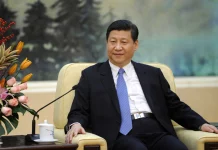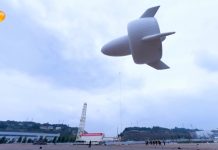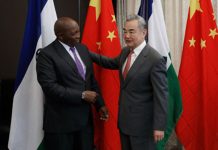
In steelmaking, what once relied on the seasoned eye of a master is now handled by smart systems that read flame color and brightness to guide inputs with precision. In sugarcane fields, robots take care of planting, spraying and harvesting while spotting weeds to cut pesticide use. A legal large model can translate laws from all 10 member countries of the Association of Southeast Asian Nations (ASEAN), and a fruit-focused large model offers features such as evaluating when durians are ripe, helping more ASEAN produce reach the Chinese market.
These advances were among the highlights of the AI for All: China-ASEAN—also known as the AI Super League, a competition for cutting-edge technologies transforming everyday industries. Since its launch in July in Nanning, Guangxi Zhuang Autonomous Region, the event has attracted more than 3,300 teams, including 329 from ASEAN countries.
As the curtain-raiser for the 22nd China-ASEAN Expo (CAEXPO) and the China-ASEAN Business and Investment Summit, which kicked off in Nanning on September 17, the event lit up the stage with an innovation buzz.
Themed Digital Intelligence and Innovation Empower Development—Leveraging China-ASEAN FTA 3.0 New Opportunities for an Even Closer China-ASEAN Community With a Shared Future, this year’s CAEXPO for the first time set up a 10,000-square-meter pavilion dedicated to AI, underscoring the ever-expanding cooperation between China and ASEAN nations.
Addressing the opening ceremony, Chinese Vice President Han Zheng said China stands ready to work with ASEAN countries to embrace the new wave of scientific and industrial transformation, unlocking the potential of cooperation in frontier areas, including AI, as well as in the digital and green economies.
ASEAN Secretary General Kao Kim Hourn said that after more than two decades of development, the CAEXPO has become more than a showcase for trade and investment. As a platform shaping the future of ASEAN-China cooperation, it now serves as a driver of integration, innovation and long-term growth.
New opportunities
This year’s AI spotlight arrived amid the upcoming upgrade of the China-ASEAN Free Trade Area (CAFTA) to version 3.0. On May 20, the two sides concluded related negotiations, adding nine new chapters covering areas such as the digital economy, green economy, customs procedures and trade facilitation.
This upgrade demonstrates broader and deeper regional economic integration, with supply and industrial chains set to become more closely intertwined, paving the way for further growth in trade between China and ASEAN, Li Daokui, Director of the Academic Center for Chinese Economic Practice and Thinking at Tsinghua University, said on his personal social media account.
According to the General Administration of Customs of China, trade between China and ASEAN grew from 870 billion yuan ($105 billion) in 2004 to nearly 7 trillion yuan ($984 billion) in 2024. China has remained ASEAN’s largest trading partner for 16 consecutive years, while ASEAN has been China’s top trading partner for five years in a row. Their cumulative bilateral investment had exceeded $450 billion as of this July.
Kao revealed that the CAFTA 3.0 is expected to be signed this October, which sends a strong signal to the world—even amid rising geopolitical tensions and global uncertainties, China and ASEAN remain firmly committed to upholding a rules-based trading system.
“The CAFTA 3.0 is a vital contribution to defending a free and open world economic system,” Sang Baichuan, Dean of the Institute of International Economy at the University of International Business and Economics in Beijing, told Beijing Review. “It upholds the principles of free trade and free investment, even as some economies move in the opposite direction.”
Sang said the two sides are highly complementary in terms of industrial structure. Over the years, they have developed tight supply chain linkages that have already yielded tangible results. The CAFTA 3.0 is designed to strengthen the growth and resilience of China-ASEAN supply chains through institutional improvements.
He added that the newly added chapters reflect the direction of future economic transformation. Strengthening institutional frameworks in these areas will help ensure their economic cooperation keeps pace with technological change and aligns with the global drive toward sustainable development.
“Deepening economic and trade cooperation between China and ASEAN has injected a sense of certainty into China’s export and global trade,” Li said.
Southeast Asia is home to nearly 700 million people and has a remarkably young population. Strong consumption intentions, coupled with consumption’s contribution of around 60 percent to GDP, make the region highly attractive.
While purchasing power is still lower than in Western countries, the ongoing transfer of global supply chains is gradually increasing wealth in the region, giving rise to a growing middle class and presenting vast business opportunities, Li explained.
“ASEAN also offers China an avenue to advance industrial upgrading,” he said. Taking Chinese tech giant Huawei’s 5G technology as an example, while globally leading, it has faced resistance from the United States and several of its Western allies. China’s rising popularity in Southeast Asia allows its high-value products to gain traction there. Similarly, China’s high-speed rail technology and its homegrown C919 passenger aircraft have entered local markets.
ASEAN, with its huge population and integrated markets with China, represents a major growth opportunity for the next two decades, according to Li.
Han said China will work with ASEAN to make the CAFTA 3.0 a success, continue the high-quality implementation of the Regional Comprehensive Economic Partnership, a free trade pact comprising the 10 ASEAN member states and their five major trading partners—China, Japan, the Republic of Korea, Australia and New Zealand—and the world’s largest free trade deal to date, better link up their markets, and enhance the hard connectivity of infrastructure and soft connectivity of rules. China will continue to expand import of competitive specialty products from ASEAN countries.
A shared future
In 2013, Chinese President Xi Jinping proposed building a closer China-ASEAN community with a shared future and the initiative of the 21st-Century Maritime Silk Road during his state visit to Indonesia.
The China-proposed Belt and Road Initiative (BRI), consisting of the Silk Road Economic Belt and 21st-Century Maritime Silk Road, aims to boost connectivity along and beyond the ancient Silk Road routes.
Over the years, China and ASEAN enjoy growing connectivity, deepening economic integration, robust business ties and closer people-to-people exchange.
The China-ASEAN relationship has grown into the most successful and vibrant model for cooperation in the Asia-Pacific and an exemplary effort in building a community with a shared future for humanity, Xi said while addressing the opening ceremony of the 17th CAEXPO and China-ASEAN Business and Investment Summit in 2020.
At the opening ceremony, Han said China will take the fifth anniversary of the China-ASEAN comprehensive strategic partnership in 2026 as an opportunity to work with ASEAN to better align development strategies and enhance policy communication, carry out high-quality BRI cooperation, as well as jointly implement the Global Development Initiative (GDI), the Global Security Initiative (GSI), the Global Civilizations Initiative (GCI) and the Global Governance Initiative (GGI).
The GDI focuses on promoting international development cooperation. The GSI focuses on resolving international disputes through dialogue and consultation. The GCI aims to promote the exchange and mutual learning of civilizations. The GGI focuses on the direction, principles and pathways for reforming the global governance system.
In their remarks at the opening ceremony, leaders from ASEAN countries commended the role of the CAEXPO, stating that in today’s complex international landscape, its focus on digital intelligence and innovation carries particular importance. They were confident that this year’s expo further strengthened the enduring friendship and trust between ASEAN and China, while promoting inclusive and sustainable growth. BR
China-ASEAN Free Trade Area (FTA): From 1.0 to 3.0
FTA 1.0: Launched in 2010, with negotiations starting in 2002—the first FTA for both China and ASEAN.
• Zero tariffs were applied to over 90 percent of products.
FTA 2.0: Upgraded in 2015 and fully implemented in 2019.
• Expanded to services and investment, opening sectors such as finance, telecom and tourism, and covered modern topics like e-commerce and economic-technical cooperation.
FTA 3.0: Negotiations ran from 2022 to May 2025, with signing planned in October.
• Nine chapters added, including the digital economy, green economy and supply chain connectivity, promoting deeper regional economic integration. –The Daily Mail-Beijing Review news exchange item




